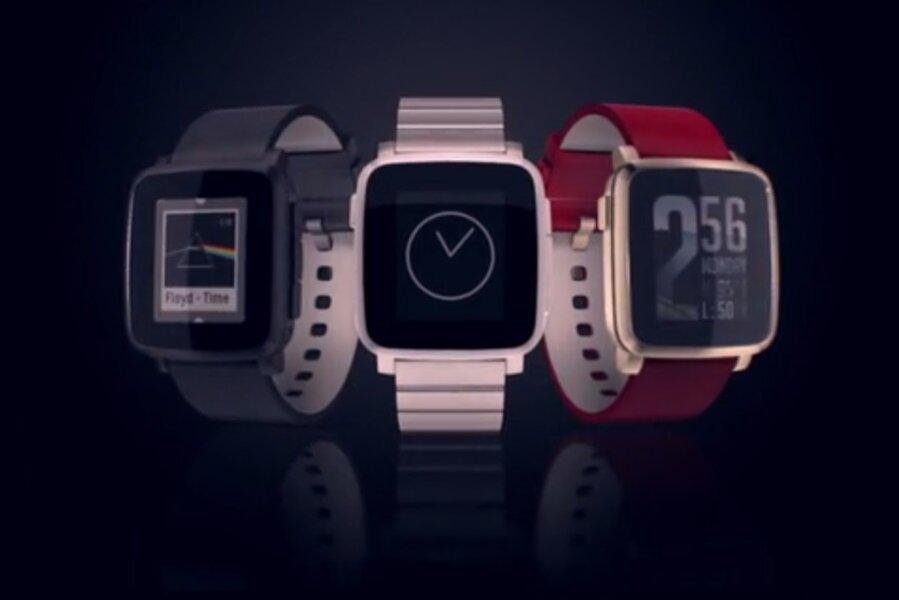Pebble Time Steel classes up the popular smart watch, breaking Kickstarter records
Evidently not content with having raised more than 25 times their funding goal, smart watch company Pebble is sweetening the deal on its Kickstarter campaign by introducing the Pebble Time Steel, a watch with a stainless steel case and leather strap, with a black, silver, or gold finish.
The Pebble Time Steel is meant to be a little more dressy than the Pebble Time, though it still includes all the latter’s features.
Pebble’s approach to smart watches is unique. While competitors such as Samsung and LG have built powerful wrist computers that have many of the features you’d find in a smart phone, Pebble’s first smart watch had a black-and-white display and couldn’t do much of anything without being synced to a phone. Pebble sold more than a million of those watches before returning to Kickstarter to fund its successor.
The Pebble Time has a color e-paper screen, which simulates the look of printed ink. The screen is easier to read in sunlight than the LED display you’d find on a smart phone or tablet (or on many other smart watches), and draws very little power. That means the Pebble Time will last up to seven days between battery charges, the company says. (The Pebble Time Steel, which is about a millimeter thicker, will last up to 10.)
Pebble also announced on Tuesday that it will allow other companies to build special “smart straps” for the Pebble Time and Pebble Time Steel. Straps could include heart rate monitors or GPS chips so that fitness enthusiasts can track their workouts, or have an extra battery embedded to prolong the watch’s battery life. The only sensor on the Pebble Time itself is a microphone for voice dictation, so smart straps are a nifty way of allowing the watch to do more things.
By Tuesday morning, nearly 60,000 people had donated toward the Pebble Time, and the Kickstarter campaign had raised more than $13 million with 24 days still to go, making it the most successful Kickstarter project ever. The level of interest in the project suggests that there is a real market for smart watches and other wearables – but that landscape will undoubtedly change dramatically in April, when the Apple Watch is expected to go on sale. Customers may come to see the Apple Watch as the standard for the smart watches, in the way that the tablet market today can be divided into the categories of “iPad” and “everything else.” Or customers may fail to embrace the Apple Watch the way they did the iPhone and iPad.
Either way, Pebble – and the makers of numerous Android smart watches – have a few more months to try to define the market and attract early adopters before the Apple Watch debuts. After that point, there’s no telling what the wearables market will look like.







